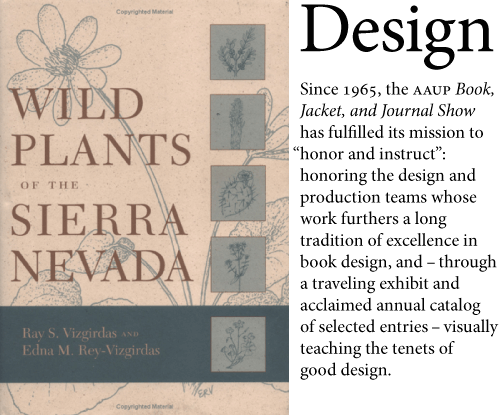Top Ten Typefaces Used by Book Design Winners
Fonts in Use, Handpicked Typefaces | Stephen Coles | November 12, 2008
The American Association of University Presses (AAUP) holds an annual Book, Jacket & Journal Show which catalogs the best in book design and exhibits it around the country.
The jurors for this year’s show include some important names in typography, including William Drentel and Jessica Helfand of Design Observer, and typographer and type designer Kent Lew, who created the Font Bureau’s lovely and literary text face, Whitman.
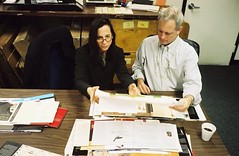
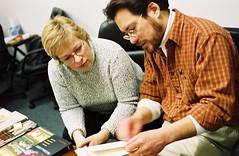
Jessica Helfand, William Drentel, Susan Colberg, and Kent Lew examine AAUP Show entries.
The catalog of the show is a beautiful record of the selected entries, and, because typeface credits are included, it’s also a good gauge of current trends in typeface selection for books and journals.
We ordered catalogs from the last three years of the show and tallied the typefaces used. The results won’t shock you — each of the top ten is a tried-and-true classic. Yet there is so much more great type out there begging to be used for academic text and titling. So, along with the champions, I’m recommending a few less common alternatives that offer just as much readability, function, and beauty for today’s books and journals.
1. Minion VIEW AT FONTSHOP
“Wild Plants of the Sierra Nevada” | Designer: Cameron Poulter | Cover type is New Caldeonia
With a set of 64 fonts in various optical size masters and a condensed option, Minion is one of the most complete serif families available. Add to that an economical width and what might be the most powerful endorsement of any book face — Robert Bringhurst used it for his seminal “Elements of Typographic Style” — and it’s no surprise that Minion is the most common typeface used in all three catalogs of the AAUP show.
Alternatives:
- FF Meta Serif — Erik Spiekermann often recommended Minion as a workhorse serif until he went ahead and designed his own.
- Karmina
- Mentor
2. ITC New Baskerville VIEW AT FONTSHOP
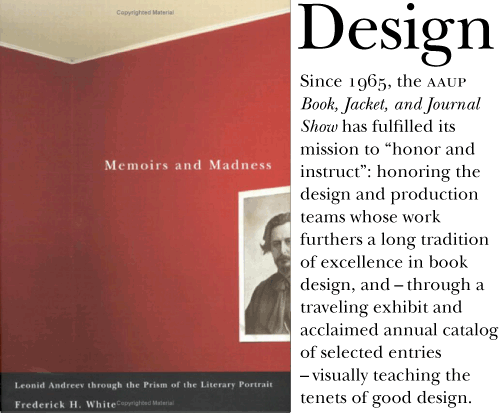
“Memoirs and Madness” | Designer: David Drummond
New Baskerville isn’t far behind Minion in the tally of most popular book faces and, if you ask me, it’s a crying shame. Of all the members of this list, the digital ITC New Baskerville is too delicate and dainty to really perform well as a text face and in most settings it’s also far too antique for the subject matter. Yes, I know Ben Franklin was a big Baskerville fanboy, but we don’t need to take all his advice.
Alternatives:
- Baskerville 1757 — If you must use Baskerville, skip the wispy ITC version and go with something meatier. Designer Lars Bergquist resisted the tendency to pare down hairlines and prettify serifs and other detail work.
- Baskerville 10
- Mrs. Eaves — Not a text face, but if the moment calls for a flowery Baskerville aroma and ostentatious ligatures this lady will perform well. Pay careful attention to her spacing and use only for display work.
- Athelas
- FF Clifford
3. FF Scala & 4. FF Scala Sans VIEW AT FONTSHOP
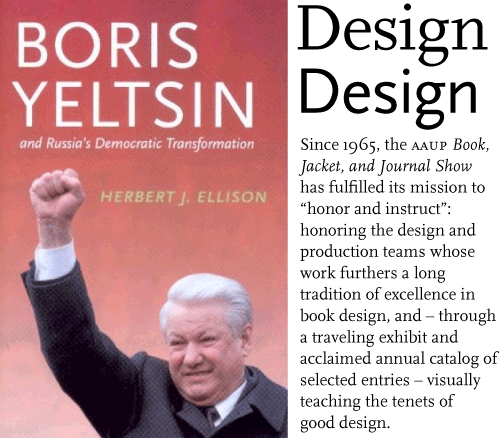
“Boris Yeltsin and Russia’s Democratic Transformation” | Designer: Ashley Saleeba
One of the first designs to come with sans and serif companions, this early FontFont is also one of the first serif typefaces to be originally designed specifically for the digital medium. FF Scala represents the only face on our list besides Minion designed after 1990. Its popularity in modern book design is obvious — it seems like every other museum catalog I see is set in Scala. Fine by me. They’re usually gorgeous.
Alternatives:
- FF Nexus Serif — Martin Majoor’s follow-up to Scala is slightly heavier, warmer, and more traditional. In addition to the expected sans companion, Nexus also has slab and monospaced variants.
- Fresco — A serif/sans pair from master Fred Smeijers that is truly contemporary. The Plus version has longer ascenders and descenders for more formal settings.
- FF Tisa — Five years ago, the options for truly new serif faces were meager. But recently, graduates of rigorous type design programs have produced scores of contemporary designs for serious text setting. Mitja Miklavčič is an award-winning product of Reading. His low contrast Tisa is a genuinely new take on text types and a welcome nonconformist in the conservative field of book design.
- Dolly
5. Adobe Garamond VIEW AT FONTSHOP
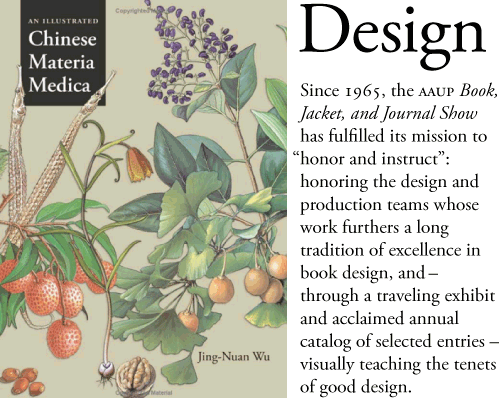
“An Illustrated Chinese Materia Medica” | Designer: Tracy Baldwin
Robert Slimbach‘s 1989 interpretation has been for years the most popular digital rendition of the roman types of Claude Garamond, the go-to typeface for those wanting a little more elegance and old world charm than a Caslon or Timescould produce.
Alternatives:
- Garamond Premier — Slimbach’s second take on the style represents nearly 20 years of research and drawing. And with its various cuts for different sizes, Garamond Premier is a more thoughtful tribute to the original metal type.
- MVB Verdigris
- Laurentian
- Arnhem
- FF Parango
6. Trade Gothic VIEW AT FONTSHOP
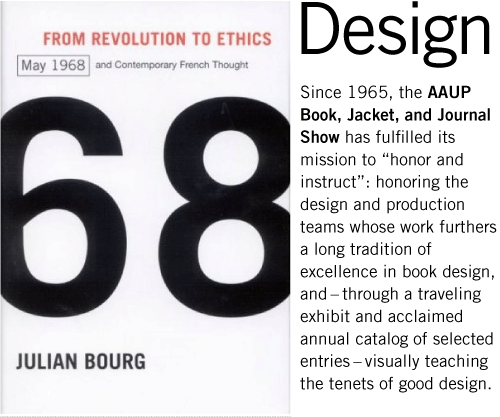
“From Revolution to Ethics” | Designer: David Drummond
The early gothic sans serif style (represented by Trade, News, and Franklin Gothic) could be considered America’s Helvetica, appearing on book jackets any time a basic sans is needed. Like Helvetica, they are used so often that they’ve lost much of their character. So unless banality is the goal, there are many alternatives that are either more interesting or offer more utility for modern design.
Alternatives:
- Benton Sans — True to Font Bureau’s tradition, many of News Gothic’s quirks have been regularized for their reinterpretation, and Benton is livelier in the heavy weights, yet the original’s sturdy, no-nonsense tone remains. Most importantly, the family was expanded into a versatile 26-piece set.
- Spiegel — In drawing a new headline face for the German magazine Der Spiegel, Luc(as) de Groot transformed Franklin Gothic into a modern powerhouse.
- Bulldog — Taking its cue from typefaces born before Franklin and News Gothic, Bulldog echos the organic, British idiosyncrasies of an early gothic by the Figgins foundry. Bulldog performs as well in text as it does in headlines, and though still uncommon, it’s been used successfully in annual reports and exhibition catalogs.
7. Electra VIEW AT FONTSHOP

“Arctic Spectacles: The Frozen North in Visual Culture, 1818—1875” | Designer: Ashley Saleeba
Perhaps Dwiggins‘ best work, Electra deserves to be in the top ten, but it’s a little light for modern presses.
Alternatives:
8. Fournier VIEW AT FONTSHOP
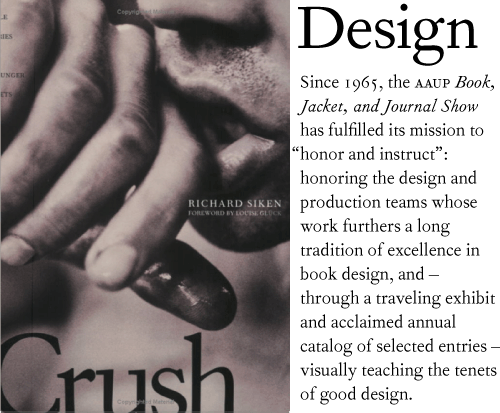
“Crush” | Designer: Mary Valencia
9. Dante VIEW AT FONTSHOP
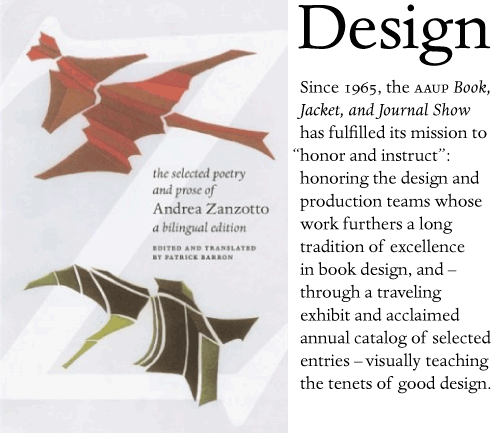
“The Selected Poetry and Prose of Andrea Zanzotto” | Designer: Maia Wright
Alternatives:
10. DIN VIEW AT FONTSHOP
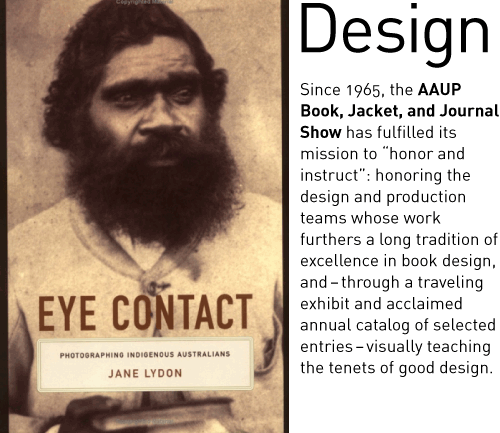
“Eye Contact: Photographing Indigenous Australians” | Designer: Amy Ruth Buchanan
http://fontfeed.com/archives/top-ten-typefaces-used-by-book-design-winners/
Time viewed 00:31


